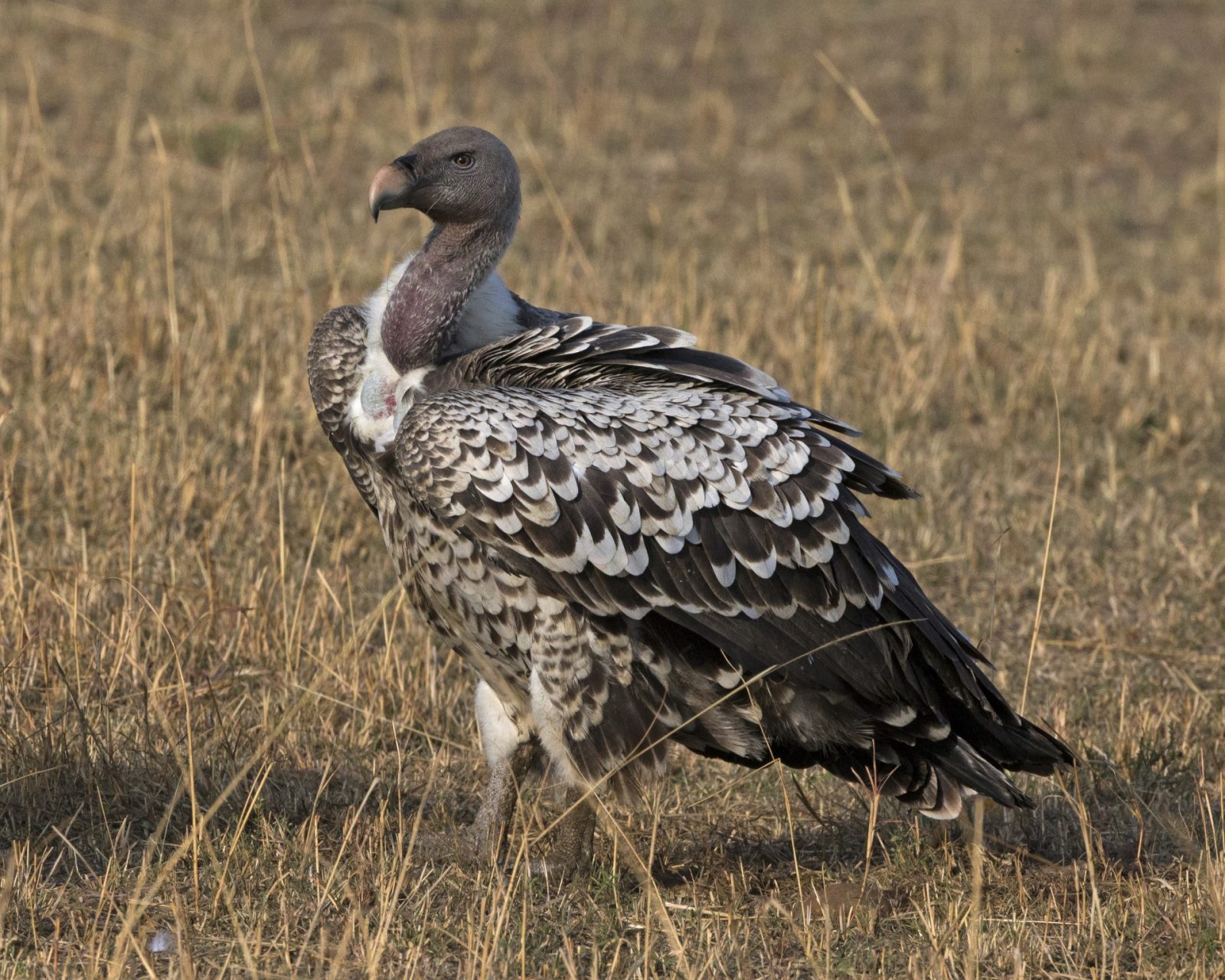
Rüppell's vulture
Found across Africa in a narrow band, the habitat in which they choose to live, however, they are largely restricted to areas of the Sahel desert and further west, areas of the Sahara desert (they range from Senegal, Gambia and Mali in the west, to Sudan, South Sudan and Ethiopia in the east; they can also be found through the savanna in Kenya, Tanzania and Mozambique).
They cruise at speeds of around 35kmh (22mph), but as they keep this up for at least 6-7 hours, they can often be spotted 150km from their nest site.
As with other vulture species, this is an exclusively carrion eater, and can be seen in places, following the vast migratory herds, so as to feed on those which fall dead behind. Their range overlaps with the Lappet-faced vulture, to which when they meet, the Ruppells vulture is generally subservient. They are also monogamous, usually mating for life. They generally nest on cliffs, and in the right places, can form breeding colonies several hundred pairs strong. Incubation lasts 55 days, but the young remain dependant on their parents until the following year, though they fledge at around 150 days. This gives them time to learn from their parents.
Listed as ‘near threatened’ until 2007, it was upgraded to ‘endangered’ in 2012 and then again to ‘critically endangered’ in 2015 where it remains. The total population of Rüppell’s vulture has been estimated to be somewhere around 22,000 individuals, with specific populations in the following areas: Tanzania (3,000 pairs); Kenya (2,000 pairs); Ethiopia (2,000 pairs); Sudan (2,000 pairs); and West Africa (2,000 pairs). They are occasionally seen in Spain and Portugal, though this is not currently recognized as part of their natural range, so these individuals are considered as vagrants (though if this continues for long, it may become part of their considered range).
Rüppell’s vulture populations are experiencing declining populations throughout their entire range. These declines can be attributed to loss of habitat related to human-related land use, poisoning, human use for medicine or meat, loss of nesting sites, and declining availability of food sources. Poisoning is currently thought of as the biggest threat to this species, though given the range of threats and the continued destruction of their native habitat, it may well not remain this way.










